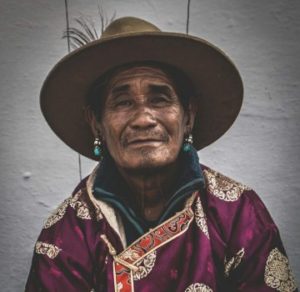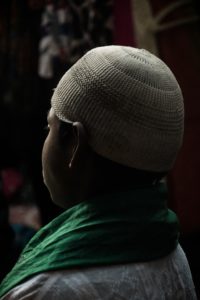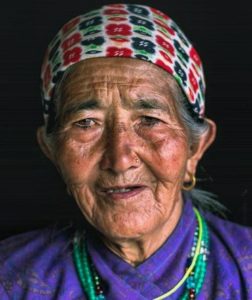The Tibetans in India have donned the status of foreign guests for quite a while now. Also seen as ‘refugees’ by the international community, they feel rootless as citizens living in a ‘Mini-Tibet’ away from Tibet. Though the Tibet here makes more of a ‘city-life’ than ‘mountain-life’, the citizens have managed to provide a ‘Lhasa’s vibe’ which attracts a host of tourist population. Citizens or not, guests or not, refugees or not, the Tibetan residents of Majnu Ka Tila tend to welcome visitors with utmost happiness and warmth and showcase efforts to preserve their culture and ethnic identity, while hidden among tall city buildings. They exemplify a successful balance of cultural preservation and assimilation into their host nation.
PHOTO ESSAY

Traditions of a forsaken land, to be carried in the heart

‘I haven’t set foot in the homeland since the 1970s. My world now lies here. It is congested, some people are already moving to Dehradun, but it is safe.’

‘Commerce and Spirituality here goes hand in hand. A few years back, this place belonged only to those coming from Lhasa. No one comes from Lhasa anymore, not even the monks and the nuns. Now we have foreigners and travellers who indulge deeply in our culture and cuisine.’

‘I haven’t set foot in the homeland since the 1970s. My world now lies here. It is congested, some people are already moving to Dehradun, but it is safe.’

‘The mountains seem to have forgotten us; and it is difficult to preserve the fragment of Tibetan culture we brought with us. Once we were hidden in the mountains, now we are hidden between the tall buildings’

“Take me back to the land of sylvan peace and childhood dreams, dreams I own. ” Majnu ka Tila is also a home to refugees from Pakistan since 2011. To be able to secure their tradition and culture in a diverse space where they are in a minority sure must be challenging. This young boy struggles to find his identity and roots amidst all the chaos.

‘The narrow streets are busy and chaotic but the prayer flags and the pictures of His Holiness make us hopeful for the future. I am never going to lose my roots. I like the visitors too. They rejoice a bowl of Lapping. They ask me about my homeland. I answer joyously.’
 Symbols of revolution, only to be reduced to remnants of an unfulfilled promise. Items marked with symbols of Tibetan culture are sold by vendors on the road. Captured are images of Dalai Lama, their holy leader and slogans of Free Tibet. These badges are one of the few ways in which they try to keep their culture alive.
Symbols of revolution, only to be reduced to remnants of an unfulfilled promise. Items marked with symbols of Tibetan culture are sold by vendors on the road. Captured are images of Dalai Lama, their holy leader and slogans of Free Tibet. These badges are one of the few ways in which they try to keep their culture alive.
Photos by: Daksh Kohli, Sanjana Chopra and Geetika Mishra


It?s hard to come by knowledgeable people on this subject, however, you https://php665.com/
Great beat ! I wish to apprentice while you amend your site, how
can i subscribe for a blog website? The account aided me a acceptable deal.
I had been tiny bit acquainted of this your broadcast offered bright clear idea
If you would like to get much from this article then you
have to apply these methods to your won webpage. adreamoftrains website hosting services
you are in point of fact a just right webmaster. The website loading pace is incredible.
It sort of feels that you are doing any unique trick. Furthermore, The contents are masterwork.
you have done a fantastic job in this matter!
Great post.